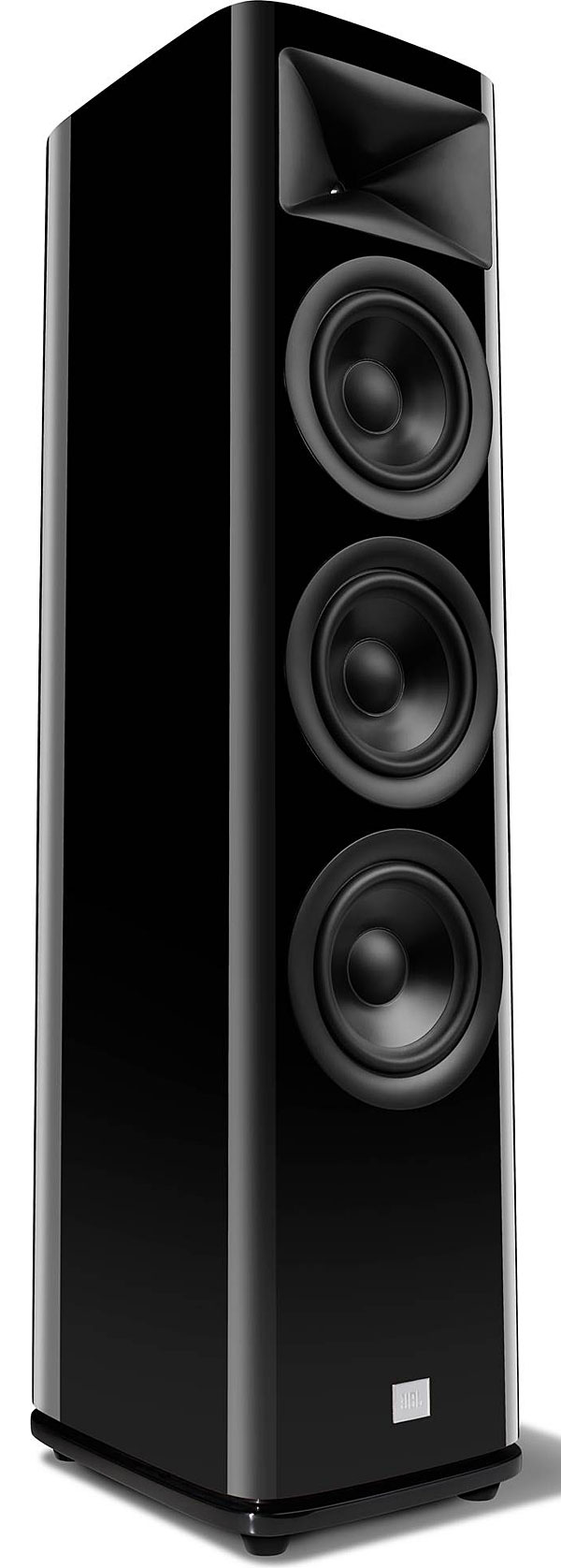JBL HDI-3600 Loudspeaker Review Page 2
Performance
Unlike with some speakers that immediately convey a specific "sound," it took me a long time to wrap my head around the HDI-3600's sonic signature. At first, I found it to be surprisingly laid-back, even somewhat soft. Later, I realized that listening at a medium-to-high loudness level helped to bring out the JBL's proper balance and detail. Would I use the HDI-3600s to listen to a steady stream of Bach harpsichord concertos? Probably not. Would I use them to listen to rock and electronic music, or include them in a home theater setup? Absolutely.
Running frequency sweep test tones revealed that the HDI-3600's low frequency extension was much in line with JBL's specs. When I listened to one of my bass torture tests, Aphex Twin's Produk 29" (16/44.1 FLAC, Tidal), the tower's low end was well- defined and conveyed a solidity that captured the gut-punching envelope of RDJ's bass-synth stabs. And pushing the volume up to a near uncomfortable level didn't cause the speakers to reveal strain or set their ports to rumbling. Instead there was a sense of dynamic ease that gave me confidence to continue at that level.

Taking a near-180-degree turn, I next listened to Van Morrison's "I Love the Life I Live" (24/96 FLAC, Qobuz) from the album The Prophet Speaks. The JBLs accurately rendered the track's intimate, jazz nightspot atmosphere. I also found that Van's vocals were free of any strident nasal quality. Depending on the system I'm listening with, and also on my mood, this can be grating, but any annoying aspect to Van's voice was effectively smoothed out by the HDI-3600. Even so, the song's Hammond organ, electric guitar, and cymbals had a dynamic presence and were well-balanced with the vocals and reverb-laden room sound.
British singer-songwriter Laura Marling has a consistently lovely voice, and when I played the song "Alexandra" from her album Song for Our Daughter (16/44.1 FLAC, Tidal), her upfront, prominently mixed vocals displayed an excellent sense of body and presence in space. Toward the track's end, Marling's singing intensifies and is reinforced by swells of background vocals. The HDI-3600 towers tracked these dynamics perfectly, and they also allowed the song's acoustic guitar, bass, and drums to cut clearly through in the mix. The "smooth" quality I had noted on "I Love the Life I Live" was also in effect here, but it allowed me to listen at high loudness level without experiencing any fatigue.
Easing into something a bit more subtle and quiet, I streamed harpist Mary Lattimore's "Til a Mermaid Drags You Under" (16/44.1 FLAC, Tidal), a track from her latest release, Silver Ladders. The song's dry, cascading layers of harp, mixed with reverb-heavy guitar (from Slowdive's Neil Halstead), were conveyed with impressive clarity by the JBLs, and there was a notable sense of spatial depth. When the song's bass synth drones are introduced about halfway through, the sound becomes anchored with a massive foundation that serves to enlarge both the horizontal and vertical scale. The HDI-3600 towers rendered this perfectly, disappearing into an endless-seeming soundstage that somehow reminded me of sitting in a planetarium.
Swapping in the Legacy Audio amplifier to hear how a power increase would affect the HDI-3600's performance, I mainly heard a tightening of the low end. Jazz tracks with standup acoustic bass gained a degree of focus, and rock and electronic ones with heavy beats benefitted in a similar way. It's not as though the difference was a clearly night-and-day one, but I found myself overall preferring the sound of the JBL towers with a higher level of power at their disposal.
Conclusion
JBL's HDI-3600 is a substantial and beautifully designed tower speaker from a brand more often associated with high-end pro audio, retro-audiophile, and budget hi-fi gear. It's definitely a departure, and one that brings JBL's offerings closer in alignment with the speakers produced by Harman stablemate Revel. While I found the HDI-3600's overall sound to be warm and a bit laid-back, those qualities also allowed for extended fatigue-free playback at relatively loud levels. Paired with the right amp, the HDI-3600 can dazzle in a music-only system, and it will also make for a great choice as the main left/right speakers in a home theater setup.





























































